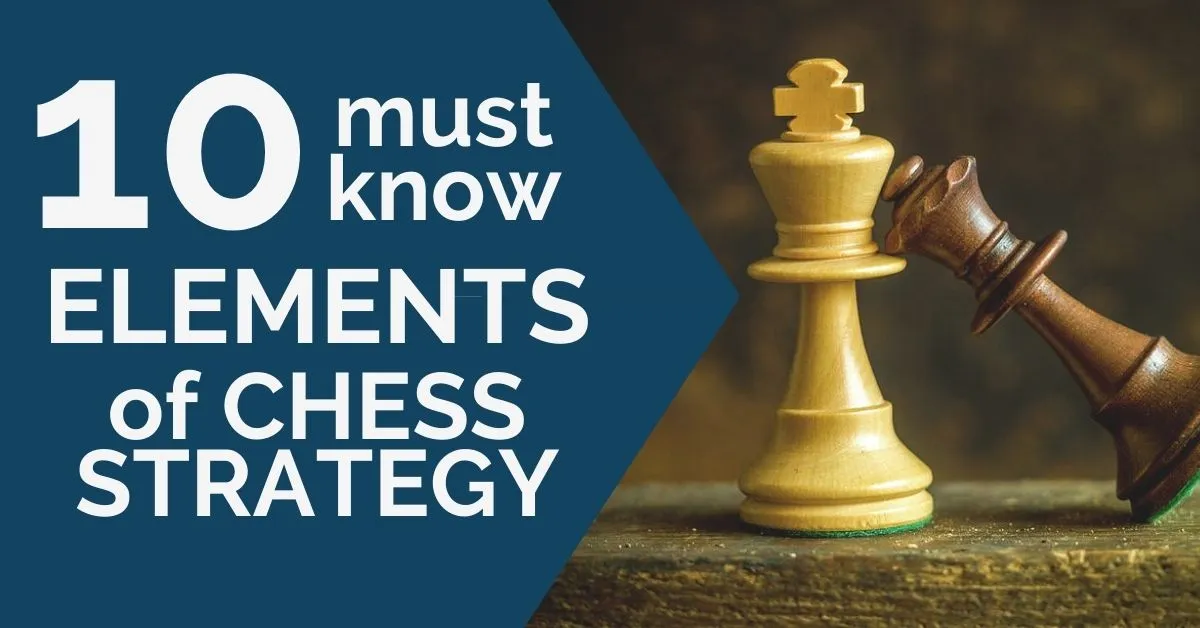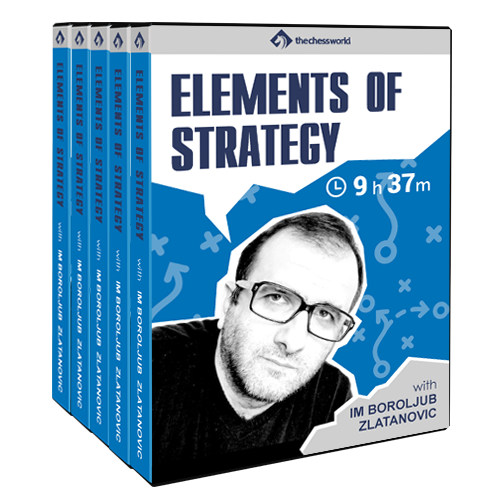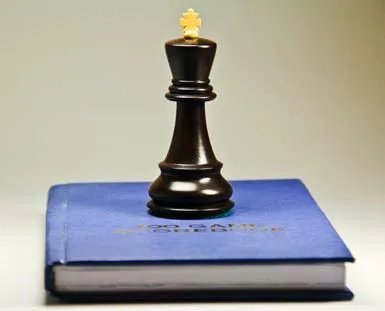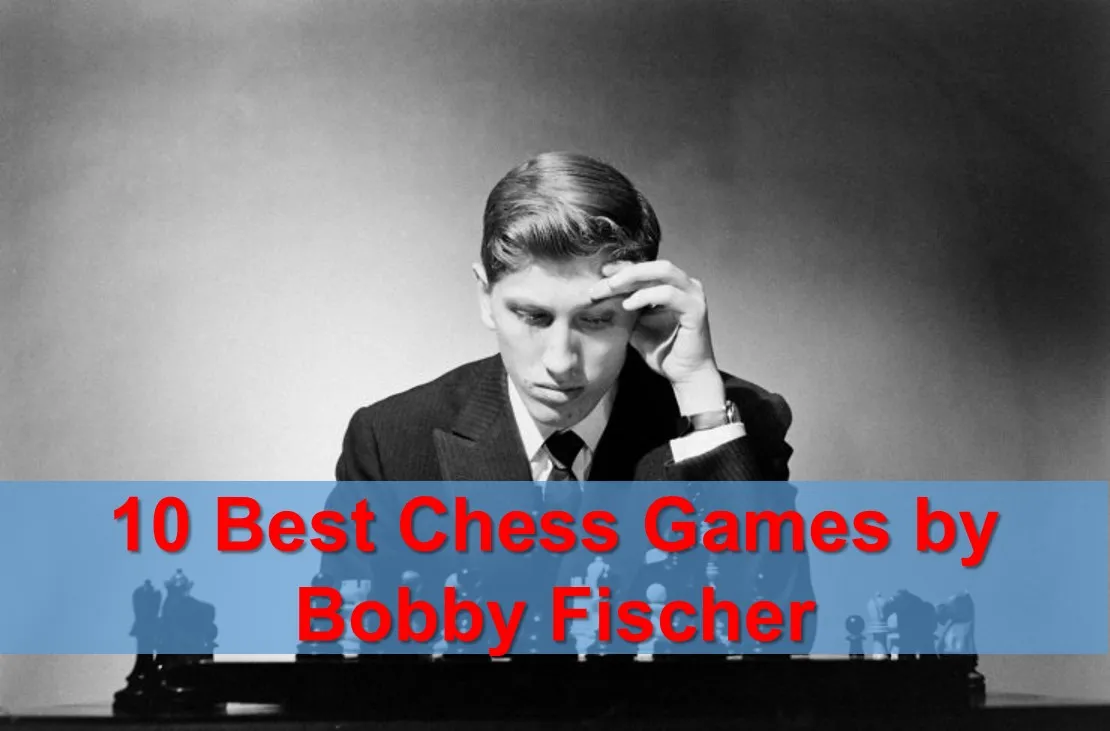10 Must-Know Elements of Chess Strategy

Chess Strategy is what separates a grandmaster from an international master in chess.
It’s his level of positional understanding and ability to formulate an accurate strategy on ANY move, in ANY position, and at ANY time. The process is subtle and subliminal—not much on the outside, rather on the inside.
If you watch a GM commentate on a chess game, it looks as if he is spouting some “common sense” ideas.
BUT… it is not so.
Every candidate move considered by the grandmaster usually goes through multiple complex strategic selection criteria.
Only those that check ALL (or at least, most) the boxes.
What are these boxes by the way? Read on.
1. Chess Strategy: Give me some real estate, baby!
First things first, every move must control more and more space for your side and restrict that of your opponent.
Why more space? It gives room for your pieces to roam about without getting cramped in a certain part of the board.
The best way to control more board real estate is by putting the pieces on active squares… and controlling key squares with multiple pieces and pawns.
2. I love it fast and furious…
From the first point, the question arises, “why is it so important for some room for the pieces to roam about?”
Because time is of the essence in chess. The faster you can summon your forces around, the more devastating your attacks will be.
Or in Jeremy Silman’s words, the more effective you would be in creating favorable imbalances.
3. Chess Strategy: Those four squares are mine
Central control is at the “center” of any positional strategy. Central control gives you the ability to impact the largest amount of squares, say for a knight or a bishop.
Place them at a corner, and they are almost always out of play. How to control those four squares (d4, e4, d5, and e5)?
Hint: use your pawns well.
4. Got nothing for you, sorry
The cardinal rule of chess is, to preempt the enemy’s plans before they could hatch.
Look around the board and try to figure out where your opponent’s attacks might land.
Is it on the flanks, along the a-file? Is it on the h7 square near your king? What would you do if you were playing on your opponent’s side?
Once you see it, you must stop it.
5. Chess Strategy: Pawns and their color complex
A BIG part of developing the right chess strategy is to get your pawns to control the right color complex.
Ideally, your minor pieces and your pawns should not fight with each other for the same colored squares—you want your pieces to have empty squares to move about.
Your homework? Start off by studying the pawn structure of your favorite opening, and piece development ideas around it.
6. Bishops or knights, which one?
Your chess strategy should dictate whether you want to keep your knights or your bishops on the board.
In most cases, a bishop pair is what you would prefer. They dominate the endgames and make it easier to mate the enemy king.
Not always though. You would be better off with knights in closed positions.
How to decide? Try to “feel” which piece would give you the better play and keep it and exchange the other.
7. Chess Strategy: King safety or king activity?
In the opening, you would usually go for the safety of your king. However, once the queens are exchanged, try to get your king out (gradually!) to a more active square where it is both safe and plays a role in your strategy.
Remember the famous king’s walk by Petrosian.
Study that game again and again, and try to understand the core logic behind the king maneuvering.
8. Tactics? None at all
Every move you make is either to secure an advantage or launch an attack… and the opposite for your opponent.
That means, not letting your opponent get an edge and stopping every attack he might be thinking about.
So, when you are selecting your candidate moves, make sure none of them gives any tactical opportunity to your opponent.
If it does, it should give even a BIGGER opportunity to you in return.
9. Chess Strategy: If you ain’t out, you are OUT!
Have your opponent got any undeveloped piece in his camp? That means, he is playing with lesser material than you.
So what should you do next? Try to take advantage of it — either launch an early attack or further limit the development of the piece.
You can even sacrifice a pawn or a piece if required. However, the more resources you have got available to you, the more initiative you end up with.
Want to learn more about this topic? Make sure to read the article about beginners.
10. Let there be peace and harmony
Last but not least, every move you make should make your overall game flow in the forward direction… like a smooth, unclogged river.
Meandering from one plan to the next, your play should feel like a musical composition, with a beautiful finish at the end.
The secret? This is where the grandmasters score off the charts, compared to the rest! Every move they make has a purpose and none is wasted.
Tough to master but once you are there, the world will pay to watch you play.
Ready to master the art of chess strategy?
Get this brand-new course by IM Boroljub Zlatanovic on the Elements of Strategy, where he reveals EVERYTHING related to chess strategy, with 24 positional masterpieces by the world’s best players.
If you’ve got 10-hours to spare and want to hit the expert level 2100+ in the next year, this is the course for you.










Comments: